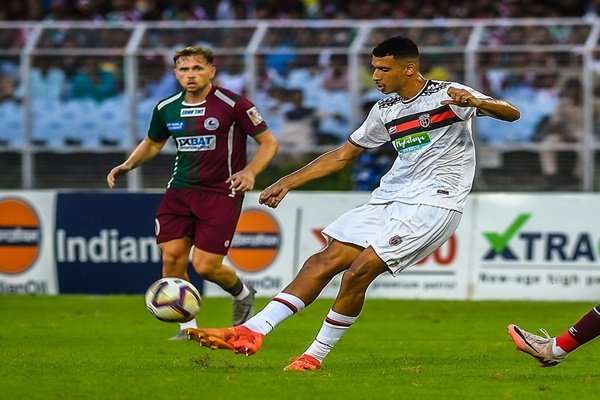The 134th edition of the Durand Cup officially kicked off on July 23, 2025, marking the start of a month-long celebration of Indian football. Recognised as Asia’s oldest football tournament, the Durand Cup has grown in scale and ambition this year, featuring 24 teams, six venues across five states, and a renewed focus on regional inclusivity, particularly in the Northeast.
Organised jointly by the Indian Army, the All India Football Federation (AIFF), and the Government of West Bengal, the tournament continues to serve as the curtain-raiser to India’s domestic football season. This year’s edition not only showcases India’s top-tier clubs but also brings teams from the Armed Forces, I-League, and select foreign participants into the spotlight.
The tournament format consists of six groups (A to F), each featuring four teams. The group stage will determine eight quarter-finalists—six group winners and the two best runners-up. The competition runs from July 23 to August 23.
This edition is significant for its widespread footprint, with matches being held in Kolkata, Jamshedpur, Shillong, Kokrajhar, and Imphal. For the first time, both Shillong and Kokrajhar are hosting knockout matches, reinforcing the growing importance of the Northeast in the national football narrative.
The venues for the group stage include Salt Lake Stadium and Kishore Bharati Krirangan in Kolkata, JRD Tata Sports Complex in Jamshedpur, Jawaharlal Nehru Stadium in Shillong, SAI Stadium in Kokrajhar, and Khuman Lampak Main Stadium in Imphal. These cities have been selected to ensure wide geographical representation and better connect Indian football with grassroots supporters.
The quarter-finals are scheduled to be held in Shillong and Kokrajhar on August 16 and 17. The semi-finals will take place in Shillong and Kolkata on August 19 and 20, with the final slated for August 23 at the iconic Salt Lake Stadium in Kolkata.
Twenty-four teams are taking part in this edition, including Indian Super League (ISL) heavyweights like Mohun Bagan SG, East Bengal, FC Goa, Kerala Blasters, Mumbai City FC, and Hyderabad FC. I-League clubs such as Gokulam Kerala, Mohammedan Sporting, and Sreenidi Deccan are also in the fray. The competition further includes Armed Forces teams like Army Red, Army Green, Indian Navy, and Indian Air Force, as well as foreign teams and invited regional sides that add variety and intensity to the matches.
Below is the complete itinerary of the 2025 Durand Cup:
| Stage | Date(s) | Venue(s) |
|---|---|---|
| Group Stage | July 23 – August 13 | Kolkata, Jamshedpur, Shillong, Kokrajhar, Imphal |
| Quarter-finals | August 16–17 | Shillong, Kokrajhar |
| Semi-finals | August 19–20 | Shillong, Salt Lake Stadium (Kolkata) |
| Final | August 23 | Salt Lake Stadium, Kolkata |
The group stage matches are being held simultaneously across all six venues, allowing fans from various regions to enjoy top-tier football action in their home states. Shillong and Kokrajhar are hosting matches from Groups D and E respectively, while Imphal is home to Group F matches.
This edition of the tournament reflects the AIFF’s continued push to promote football in underrepresented regions, with Northeast India playing an especially prominent role. The inclusion of multiple venues in the Northeast not only offers exposure to local players but also energises football fans in a region where the sport enjoys strong cultural roots.
Durand Cup 2025 is also being viewed as a testing ground for club strategies ahead of the upcoming ISL and I-League seasons. With many clubs fielding a mix of seasoned players and emerging talents, the tournament is expected to throw up surprises and serve as a showcase for future national prospects.
From heritage clubs battling for pride to army teams playing with discipline and grit, the Durand Cup continues to reflect India’s footballing diversity. As the tournament progresses into its later stages, all eyes will turn to Shillong and Kokrajhar for the crucial quarter-finals, before the tournament returns to Kolkata for its grand conclusion.
The event’s message this year is clear: the Durand Cup is not only a tournament steeped in history but also a living, evolving platform that bridges regions, clubs, and fans from across the nation.










































